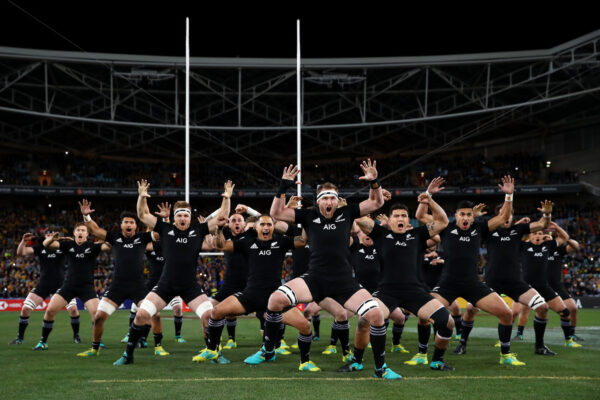
They moved in unison. Thousands of hands clapping, precise and crisp, augmented by the bang of drums and cadence of hollow Kung-fu bats. Arm motions well-timed, everyone together. Huge flags in the super-fan section, waved in a carefully prescribed motion, each flutter seeming to flap at the same moment. And the chants? Everybody knew them, and when to shout them out—every single word—raising the roof with the sing-song sounds of full-throated passion. With the “oendan” leading the legions assembled here at the Tokyo Dome, I sipped my Asahi as my tiny seat rumbled.
Watching Japanese baseball isn’t for amateurs. A lifelong fan of the sport, and sometime player, I found everything down there on the field looking familiar, if, like everything else in Japan, a bit smaller. And while the baselines and the pitcher’s mound were all in all the right places, when I came to this Nippon Professional Baseball matchup between the hometown Yomiuri Giants and the visiting Yokohama DeNA BayStars, I hadn’t expected a highly rehearsed spectacle from up here in the cheap seats.
In my experience traveling around the world, a visitor has three main ways to access a foreign culture. Language, which is tough, unless you already know it. Food, always a favorite. And, sport. What people play, and how they cheer it, tells you a lot about the locals, what they enjoy and value, and attending a live sporting event is a perfect way to see spontaneous joy, anger, and life on display.
Baseball

For example, baseball. Of course, going to a ball game is an American tradition—and, mostly, a rather leisurely affair. Fans on this side of the ocean cheer strikeouts and homeruns and jeer the umpire, but during those typically long stretches when little is happening out there on the diamond, people sit back and chat, lazily following the action. But in highly collectivist (and often conformist) Japan, where this is the most popular sport, everyone is expected to do their part for the win.
Starting with the oendan, the dedicated cheer squad. Every team has one, and you must actually apply and be admitted in order to join. Seated in special sections of the stadium, they create and lead chants specialized for each player of the team, often adapted from Japanese pop hits, singing and banging them out when their side is batting. Some teams coordinate with props, like balloons, or even mini-umbrellas.
In a trademark display of decorum and politeness, the other team’s oendan remains silent when their guys are in the field. The sound is pervasive and never-ending—even when your team is down several runs, you’re expected to keep on cheering, until the players have made the last out of the game. That spirit of togetherness extends to the squad. Players make sacrifices, like accepting lower pay so that management can field a balanced and well-rounded team.
Soccer

It’s a long way from the agony and ecstasy of a soccer game, in some parts of the world. When I arrived at a matchup between Fluminense FC and Sao Paulo FC in Rio de Janeiro, the atmosphere was tense. Riot police on horseback kept the two sides apart, outside. And inside, visiting fans were seated in a completely separate section of the stadium, divided by a tall fence, and two lines of police. (While that was a shocking sight, it was still a bit less extreme than some soccer pitches I’ve visited. For example, the infamous Bombonera in Buenos Aires, home to Boca Juniors, where visiting fans weren’t allowed to attend at all.)
My local guide had insisted on accompanying me to the match, and now I saw why.
“Is this a big rivalry? A lot of bad blood between these teams?” I asked.
“No,” she responded, a little confused. “This is normal, for every game.”
Soccer is a serious affair all over the world, with fans attaching personal value and national pride to their team.
Rival squads have hired witches to curse their opponent. During a World Cup qualifying match in Mozambique in 1969, the Australian national team employed a witch doctor to curse their opponents, Zimbabwe (then called Rhodesia)—and when they refused to pay him for his services, he reversed the curse. The national football federation in Rwanda had to formally ban witchcraft (complete with penalties for teams that didn’t comply) after an on-field incident where the goal was cursed.
Riots have occurred and, on multiple occasions, armed fans have charged the field, for example in Egypt, Greece, and England. El Salvador and Honduras even fought the Football War in 1969 when tensions over a World Cup qualifying match boiled over into a 100-hour armed conflict.
And in Brazil, soccer is a religion, played with passion from the beach to tiny, fenced-in pitches in the favelas. Although some of the world’s finest players have hailed from this country—from Pelé to Ronaldo to Neymar—the best of the best almost always go abroad to play in Europe’s top echelon. More Brazilians play abroad than any other nationality—some 1,600 at last count, across 93 countries, with about 65 percent in Europe.
So while the level of play before me now may not have risen to the level of the English Premier League or the Bundesliga, the passion of the fans was no less intense.
The game did not go well for the home side, with Sao Paulo banging in two quick goals. My guide dutifully translated the shouts of Portuguese around me, providing, I assume, a bit of a filter—“he is saying that the coach is not very good,” that kind of thing. But after Fluminense went down 3-0, a fan behind us let loose with what sounds like a particularly nasty tirade. My guide blushed, shaking her head. “No translation,” she said, simply, and conclusively.
I’ve seen this passion in many other countries, and sports. The restrained intensity of Indian cricket fans, as they follow a multi-day test match. The uproarious celebration after a winning goal in a Czech hockey game. The joy of cheering a touchdown with Hawaiian football fans at Aloha Stadium in Honolulu.

But perhaps no nation is so closely identified with a single sport as New Zealand, and rugby. It’s a game that powerfully brings together the cultures of this country. Before European settlement, the Maori people played a somewhat similar sport, with a ball made of thatch. “Rugby football” migrated from England to this island nation in 1870, and a touring team from Australia arrived in 1882 to play the first international matches.
Now, pride in the All Blacks, the national team, is almost universal. Their “haka,” a traditional Maori dance of intimidation, has been performed before international matches since 1888, the stomping and shouts challenging their opponents. I’ve never seen it on the field, but having witnessed a haka performed by Maori as part of a cultural experience in the geothermal town of Rotorua, I can tell you, it hits you right in the middle of the chest, a primal and wonderful and visceral experience. Something I would fear, were I about to face off, on the pitch.
But I have attended two regional rugby matches, both in Auckland. The second took place on the rainiest night imaginable, sheets of soaking precipitation pouring down. It was an impromptu invite—I was getting my hair cut, and the barber mentioned he had an extra ticket—that I immediately accepted. Arriving at the stadium, we sloshed through ankle-deep puddles, but found the stands still relatively full, despite the truly awful weather.
Fans sat in slickers, unfazed by the downpour, cheering on the home side. They happily explained the rules to me, and answered all of my many questions. Why did the referee blow the whistle? How the team get those points? Their patience and joy was indefatigable. Soaked to the skin, I walked back to the car smiling, knowing I had just gotten a sneak peek at a culture, a moment of national candor, a chance to root for the home team and come away enriched. Definitely, more than just a game.
Toronto-based writer Tim Johnson is always traveling, in search of the next great story. Having visited 140 countries across all seven continents, he’s tracked lions on foot in Botswana, dug for dinosaur bones in Mongolia, and walked among a half-million penguins on South Georgia Island. He contributes to some of North America’s largest publications, including CNN Travel, Bloomberg, and The Globe and Mail.





Be the first to comment